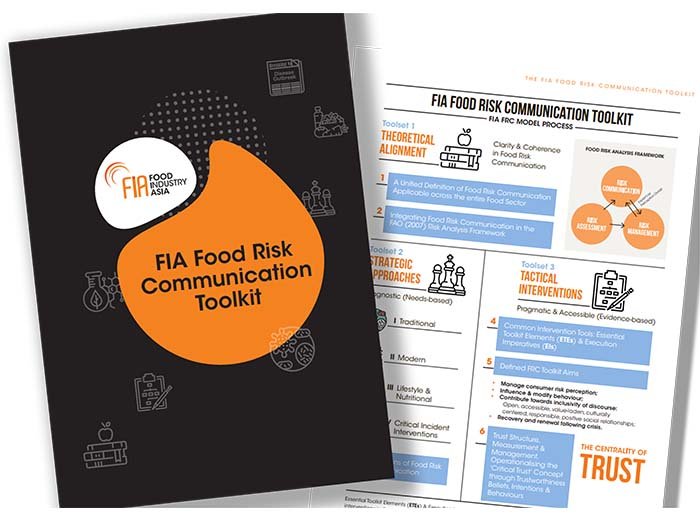This year, 7 June marked the first-ever World Food Safety Day, since it was declared by the United Nations General Assembly in December 2018. Under the theme “Food Safety, everyone’s business”, the World Health Organization (WHO) and the Food and Agriculture Organization of the United Nations (FAO) came together to raise awareness and promote action to ensure food safety globally.
Food safety: A threat to global health and economies
With contaminated food responsible for around 600 million food poisoning cases and 420,000 deaths every year, food safety hazards have become a growing global public health concern. Ensuring access to sufficient amounts of safe and nutritious food is also essential to sustaining life and promoting good health, especially in low- and middle-income countries where consumer awareness and regulatory measures are lacking.
Beyond health concerns, the economic costs of unsafe food are also high, especially in Asia, which has one of the highest incidences of foodborne diseases. It also poses significant threat to food security, human development, and international trade.
In a world where food systems are rapidly changing and the supply chain has become increasingly complex, tracking the journey food takes from farm to fork is now more challenging. A single incident can have dire consequences for all stakeholders. Due to the complexity of the issue and the resulting spectrum of adverse effects, an integrated and multidisciplinary approach is necessary to detect, assess and mitigate food safety risks across the entire value chain.
Moving towards a risk-based approach
Food safety is one of FIA’s four core pillars and since its inception in 2010, the industry body has taken a proactive approach in engaging stakeholders in an open and constructive discussion on the initiatives needed to protect food supply chains for the benefit of consumers, businesses and governments. Taking into consideration recent developments in food safety management, FIA developed and launched a comprehensive Food Risk Communication Toolkit at this year’s Food for the Future Summit.

From lifestyle and modern food risks to critical food incident management, FIA’s toolkit is one of the most comprehensive and practical treatment of risk communication to date, and will provide significant support to regulators across the region in improving consumer trust towards food safety.
Globally, there has been a shift towards a risk-based approach to food safety in a bid to protect public health as effectively as possible. This involves the adoption of the risk analysis framework as the basis of regulators’ decision making, which is composed of three key elements – risk assessment, risk management and risk communication.
However, food risk communication is often overlooked despite the important role it plays in improving stakeholders’ understanding of the necessary action to manage food safety hazards that the public faces. Effective risk communication tools will be able to mitigate food risks, prevent outbreaks, promote better decisions by food handlers and guide consumers towards healthier food choices.
Furthermore, the globalisation of food systems, rapid urbanisation and shifts in consumption habits have resulted in the emergence of new and unknown food safety risks. Consequently, the importance of risk communication has increased considerably and there is now a greater need for national authorities to enhance their capabilities.
The government agencies are rightly viewed as trusted sources of impartial information and in a world of polarising opinions, they play a crucial role in mediating debate on a wide range of societal risk issues such as climate change. The challenge of demonstrating trustworthiness and developing effective relationships with the public has never been more critical.
In order to deliver effective food risk communication, national authorities also need to recognise the paradigm shift in consumer expectations as a result of the proliferation of the Internet and social media. Due to greater demands for transparency, it is no longer sufficient to simply communicate risks, and authorities are now expected to engage in genuine on-going conversations that are underpinned by trustworthy behaviour.
A multi-sectoral approach
While government bodies have the fundamental responsibility of managing risks, the private sector must also do its part in providing clarity on its products and latest innovations to equip consumers with the necessary knowledge to make informed decisions.
Although consumers today are increasingly savvy about the food products they purchase and aware of the relevant risks, they may still be overwhelmed by the vast amount of available information which are at times conflicting. When such situations occur, they may disengage from discussions and information sources altogether.

At an event organised by FAO Regional Office for Asia and the Pacific in celebration of World Food Safety Day on 7 June, government delegations from Bhutan, Singapore, Thailand and the Philippines, together with private sector representatives, agreed that consumer communication and education is an important yet challenging area. Consumers’ perspectives on food safety and nutrition could be different due to influencing factors such as age and culture.
Therefore, it is pertinent that the private and public sectors focus on executing quality food risk communication in order to empower consumers with accurate information in terms they can easily understand and put into action. In order to do so, they need to consider the diversity in audiences, modern food culture, deliberations around technology and varying consumer attitude towards lifestyle and nutrition.
From FIA’s perspective, food risk communication strategies should be adopted by regulators and the wider industry so as to better understand consumer reactions, formulate best practices around risk analysis and develop coherent processes to interact with stakeholders. This would in turn help to reassure the public and restore consumers’ trust and confidence in food safety.
Through the Food Risk Communication Toolkit, FIA seeks to guide consumers, the food industry, institutions and government agencies in exploring the full range of activities in food risk communications and addressing the tactical interventions and theoretical alignment across various food-related domains.
FIA issues regular e-bulletins with analysis on relevant food and beverage industry issues across the region. To subscribe to this service, please scroll to t he footer and join our email list.
